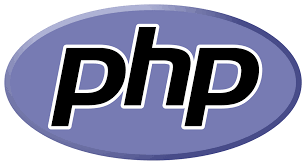In today's digital landscape, safeguarding user data and ensuring the security of web applications are top priorities for developers. Email verification in PHP stands as a critical component of this security strategy. In this extensive guide, we will delve deep into the realm of PHP email verification, offering downloadable code samples and comprehensive insights. Whether you're a seasoned developer or just starting your journey, this guide will equip you with the tools to enhance the security of your web applications.
Understanding the Significance of PHP Email Verification
Before we dive into the intricacies of PHP email verification, it's essential to grasp why it is a fundamental aspect of web application development.
Why PHP Email Verification Matters:
User Authentication: Email verification ensures that users provide a valid email address during the registration process, reducing the risk of fake or spam accounts.
Enhanced Security: Validating email addresses helps prevent unauthorized access and strengthens the overall security of your web application.
Data Accuracy: By confirming the validity of email addresses, you maintain accurate user data, making it easier to communicate with your user base.
User Engagement: Verified email addresses allow you to engage with users effectively, sending updates, notifications, and account recovery information.
Implementing PHP Email Verification
Now, let's explore the steps to implement PHP email verification effectively within your web application.
Step 1: Create a Registration Form:
- Begin by creating a registration form that collects user information, including their email address.
Step 2: Generate a Verification Code:
- Upon successful registration, generate a unique verification code associated with the user's email address. This code will be sent to the user via email.
Step 3: Send Verification Email:
- Send a verification email containing the code to the user's registered email address. Use PHP's built-in 'mail' function or a third-party email service.
Step 4: Verify the Code:
- Instruct users to click a verification link within the email, or enter the code manually on your web application. Verify the code against the user's email address.
Step 5: Activate the Account:
- If the code matches, activate the user's account, granting them access to your web application.
Downloadable PHP Email Verification Code
To simplify the implementation of PHP email verification, we have prepared downloadable code samples that you can integrate into your projects. These code snippets cover essential aspects of email verification, including sending verification emails and processing user input.
Download PHP Email Verification Code
Common Questions about PHP Email Verification
As we conclude our exploration of PHP email verification, let's address some of the frequently asked questions on this topic:
Q1: Do I need a third-party email service to send verification emails in PHP?
No, you can use PHP's built-in 'mail' function to send verification emails. However, third-party email services like SendGrid or Mailgun can provide additional features and reliability.
Q2: How can I handle email bounces or undelivered verification emails?
Third-party email services often offer delivery tracking and reporting, allowing you to manage bounced emails and take appropriate actions.
Q3: Is there a way to automate the email verification process without manual code intervention?
Yes, you can create automated scripts that periodically check for unverified accounts and send reminder emails.
Q4: Can I customize the email content and design for verification emails?
Yes, you have full control over the content and design of verification emails. Customization can help improve user engagement and trust.
Q5: What security measures should I implement to protect against email verification abuse or attacks?
Consider implementing measures like rate limiting, CAPTCHA verification, and email throttling to prevent abuse or attacks on your email verification system.
Conclusion
In conclusion, PHP email verification is a critical component of web application security, user authentication, and data accuracy. By following the implementation steps outlined in this guide and utilizing our downloadable code samples, you can enhance the security of your web applications and ensure the legitimacy of user data. Empower your projects with the robustness of email verification and provide your users with a secure and trustworthy experience. Download the code, take action, and fortify your web applications today.



